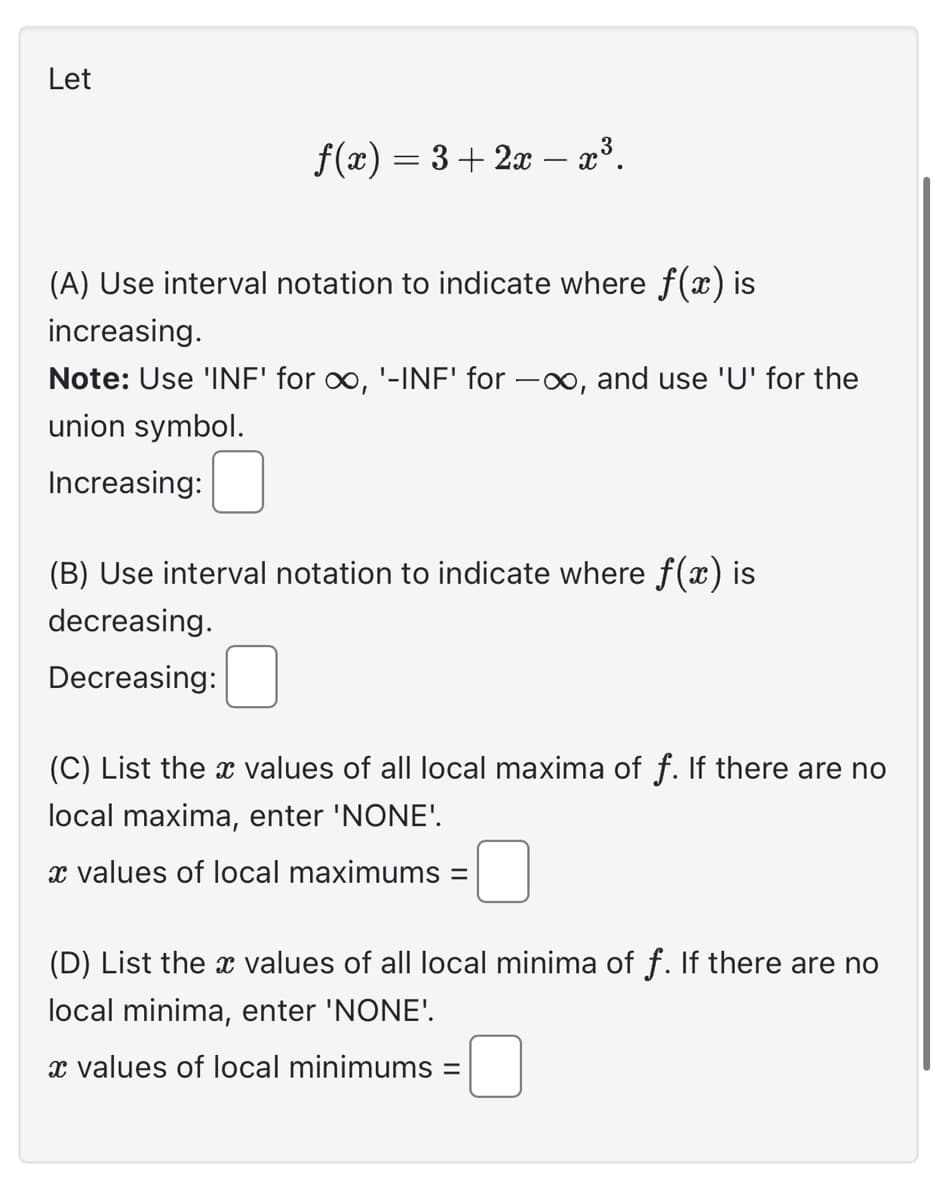Let f(x) = 3+2x– x³. (A) Use interval notation to indicate where f(x) is increasing. Note: Use 'INF' for ∞, '-INF' for -∞, and use 'U' for the union symbol. Increasing: (B) Use interval notation to indicate where f(x) is decreasing. Decreasing: (C) List the values of all local maxima of f. If there are no local maxima, enter 'NONE'. x values of local maximums = (D) List the values of all local minima of f. If there are no local minima, enter 'NONE'. x values of local minimums =
Let f(x) = 3+2x– x³. (A) Use interval notation to indicate where f(x) is increasing. Note: Use 'INF' for ∞, '-INF' for -∞, and use 'U' for the union symbol. Increasing: (B) Use interval notation to indicate where f(x) is decreasing. Decreasing: (C) List the values of all local maxima of f. If there are no local maxima, enter 'NONE'. x values of local maximums = (D) List the values of all local minima of f. If there are no local minima, enter 'NONE'. x values of local minimums =
Algebra & Trigonometry with Analytic Geometry
13th Edition
ISBN:9781133382119
Author:Swokowski
Publisher:Swokowski
Chapter4: Polynomial And Rational Functions
Section4.5: Rational Functions
Problem 54E
Related questions
Question
SHANPEN OF POLYNOMIALS FIRST QUESTION THANK YOU VERY MUCH

Transcribed Image Text:Let
f(x) = 3+2x − x³.
(A) Use interval notation to indicate where f(x) is
increasing.
Note: Use 'INF' for ∞, '-INF' for -∞, and use 'U' for the
union symbol.
Increasing:
(B) Use interval notation to indicate where f(x) is
decreasing.
Decreasing:
(C) List the values of all local maxima of f. If there are no
local maxima, enter 'NONE'.
x values of local maximums =
(D) List the values of all local minima of f. If there are no
local minima, enter 'NONE'.
x values of local minimums =
Expert Solution
This question has been solved!
Explore an expertly crafted, step-by-step solution for a thorough understanding of key concepts.
Step by step
Solved in 3 steps with 3 images

Recommended textbooks for you

Algebra & Trigonometry with Analytic Geometry
Algebra
ISBN:
9781133382119
Author:
Swokowski
Publisher:
Cengage

Algebra & Trigonometry with Analytic Geometry
Algebra
ISBN:
9781133382119
Author:
Swokowski
Publisher:
Cengage